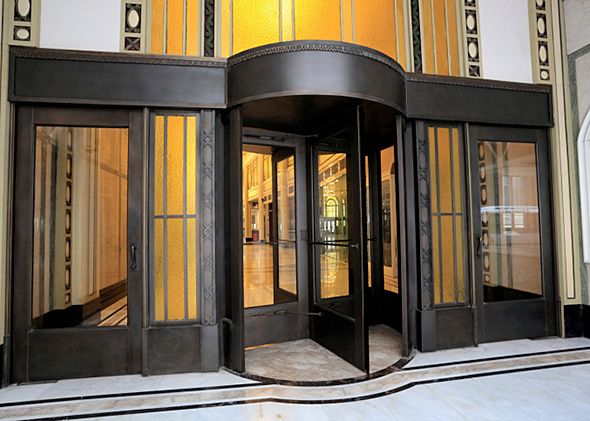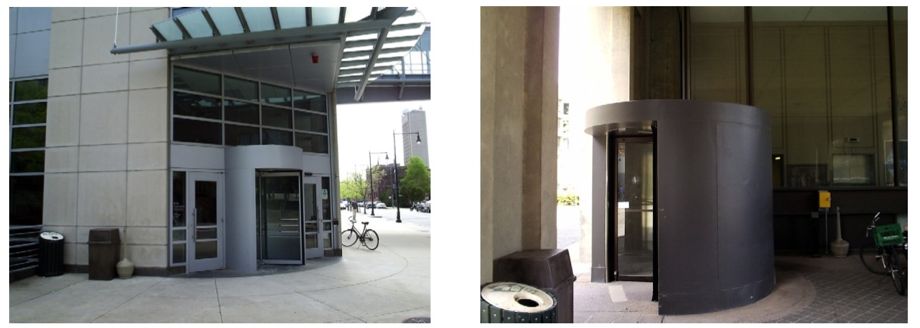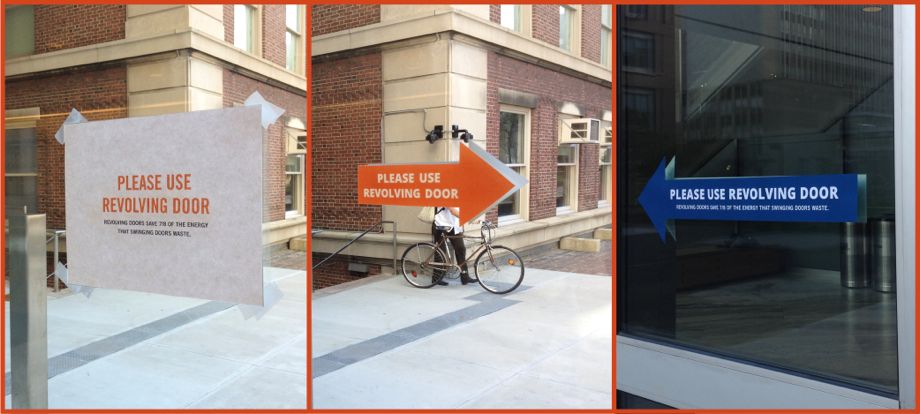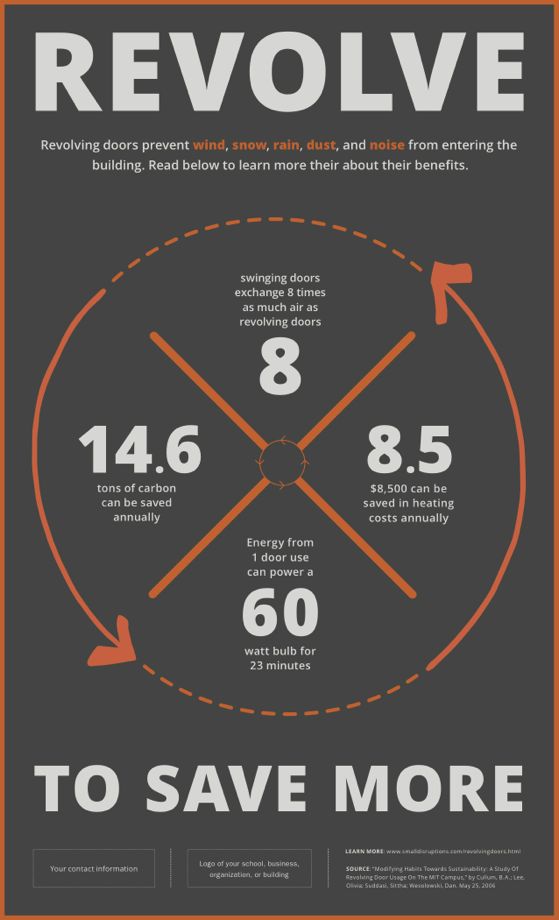Why Don't People Use Revolving Doors?

Photo courtesy iStock
By far the best design podcast around—and one of the best podcasts, period—is Roman Mars’ 99% Invisible. On it he covers design questions large and small, from his fascination with rebar to the history of slot machines to the great Los Angeles Red Car conspiracy. Here at the Eye, we will be cross-posting his new episodes so you can check them out, and we’ll also host excerpts from his podcast’s terrific blog, which offers complementary visuals for each episode.
Starting in February 2014, he plans to take season 4 of the show weekly; you can support his Kickstarter campaign here.
His most recent show—about revolving doors—can be played below. Or keep reading to learn more.
The story goes like this: Theophilus Van Kannel hated chivalry. There was nothing he despised more than trying to walk in or out of a building, and locking horns with other men in a game of “oh you first, I insist.” But most of all, Theophilus Van Kannel hated opening doors for women.
He set about inventing his way out of social phobia. And that’s how, in 1888, Theophilus Van Kannel was awarded US Patent #387571 A for a “storm-door structure,” which would soon become known as the revolving door.
Van Kannel’s invention was an improvement of the pre-existing Tür ohne Luftzug, (literally, “Door without draft of air”) by the German inventor H. Bockhacker. The first revolving door was installed in a restaurant called Rector’s in Times Square in 1899.
Thanks to Van Kannel, we have had a perfect solution for keeping dust, and noise, and rain and sleet and snow from entering buildings for over a hundred years. There’s just one problem: people don’t use them.

Photo courtesy B.A. Cullum, Olivia Lee, Sittha Sukkas and Dan Wesolowski
Sometimes they’re too heavy to push, or their compartments are claustrophobically narrow. There’s also anxiety about getting limbs caught, or getting stuck in a compartment with another person, and whether or not that’s socially acceptable. (And if you’ve read Alan Moore’s Watchmen, you might remember that detail about how caped crusader Dollar Bill got his cape caught in a revolving door and was immobilized as a bank robber approached and shot him in the head, point blank.)
You kind of have to wonder if the the revolving door’s antisocial roots just might be what keeps us from using them.
In 2006, a group of MIT students set out to figure out the exact cost of our aversion to revolving doors. They found that revolving doors exchange eight times less air that swinging doors, which can add up to thousands of dollars in wasted energy costs per building per year. You can read the whole study here.
The students further observed revolving door usage at a building on campus, and found that only 20 to 30 percent of people were using the revolving doors. They worked on getting some signs put up around campus.
A few years later, New York City-based designer Andrew Shea thought he would try to replicate the experiment at a building on the campus of Columbia University.

Photo courtesy Andrew Shea
After about 20 collective hours watching this entryway, Shea found that, similar to the results at MIT, only 28 percent of people were using revolving doors. After putting up some signs of his own design (without campus approval), Shea was able to get usage up to 71 percent.
Of course, the best way to get people to use revolving doors is simply to design them better. Newer revolving doors are the visual focus of an entrance; they’re big and spacious, with fewer compartments, and may turn automatically.
But if you can’t get a new revolving door, Andrew Shea has a revolving door action kit that you can download for free and take to your local office building. Scotch tape not included.

Image courtesy Andrew Shea
To learn more about revolving doors and see additional photos, read the rest of the 99% Invisible post or listen to the show. The episode features additional reporting—including an attempt to replicate Shea’s intervention at a building in downtown Oakland—by producer Sam Greenspan and intern Avery Trufelman. 99% Invisible is distributed by PRX.
